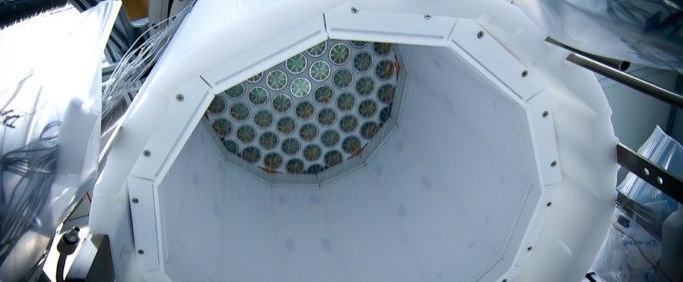Dark Matter Research
A broad range of astronomical observations across many scales consistently indicate that the vast majority of the matter in our universe is invisible. This dark matter cannot be composed of particles included in the Standard Model. This makes research in to dark matter one of the most pressing concerns in all of modern science.
- More information about dark matter: What is the evidence for dark matter and what might dark matter be?

Here in the Particle Physics Experiments group we are trying to Shake it, Make and Break it!
-
Shake it: Direct searches for dark matter involve the construction of some of the world’s most radiopure and sensitive detectors, and their operation deep underground to escape the natural radioactivity present at the Earth’s surface. These detectors have sensitivity to a broad range of other novel signatures of new physics as well, including axions, hidden photons and non-Standard Model neutrinos.
-
Future direct dark matter searches [linktonewpage]
-
Make it: If dark matter particles are produced in collisions at colliders such as CERN, then their presence could be inferred from imbalances in measured outward-going momentum and mass. Other signatures can include dark sector mediators leading to event tracks displaced from the collision point.
-
Break it: Dark matter is expected to concentrate where gravitational potentials are highest, for example at our galaxy’s centre, in the Sun, and perhaps at the centre of the Earth. If dark matter is its own particle, this could lead to an enhanced flux of neutrinos emanating from these places. We use neutrino detectors such as DUNE to search for these and related signals.
PPE Group people involved in dark matter research[link]
Past student and staff from thr dark matter group[link]
Previous dark matter search experiments[link]

